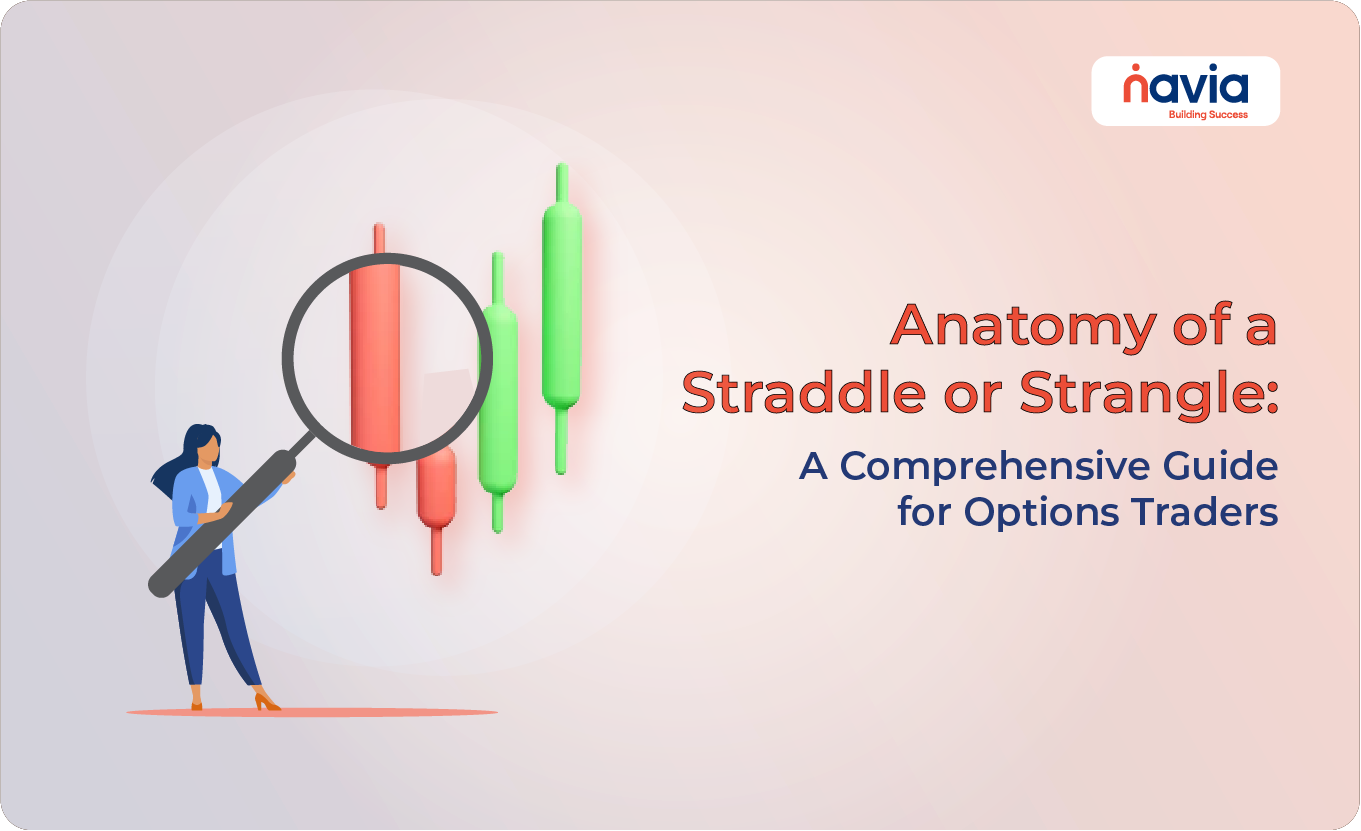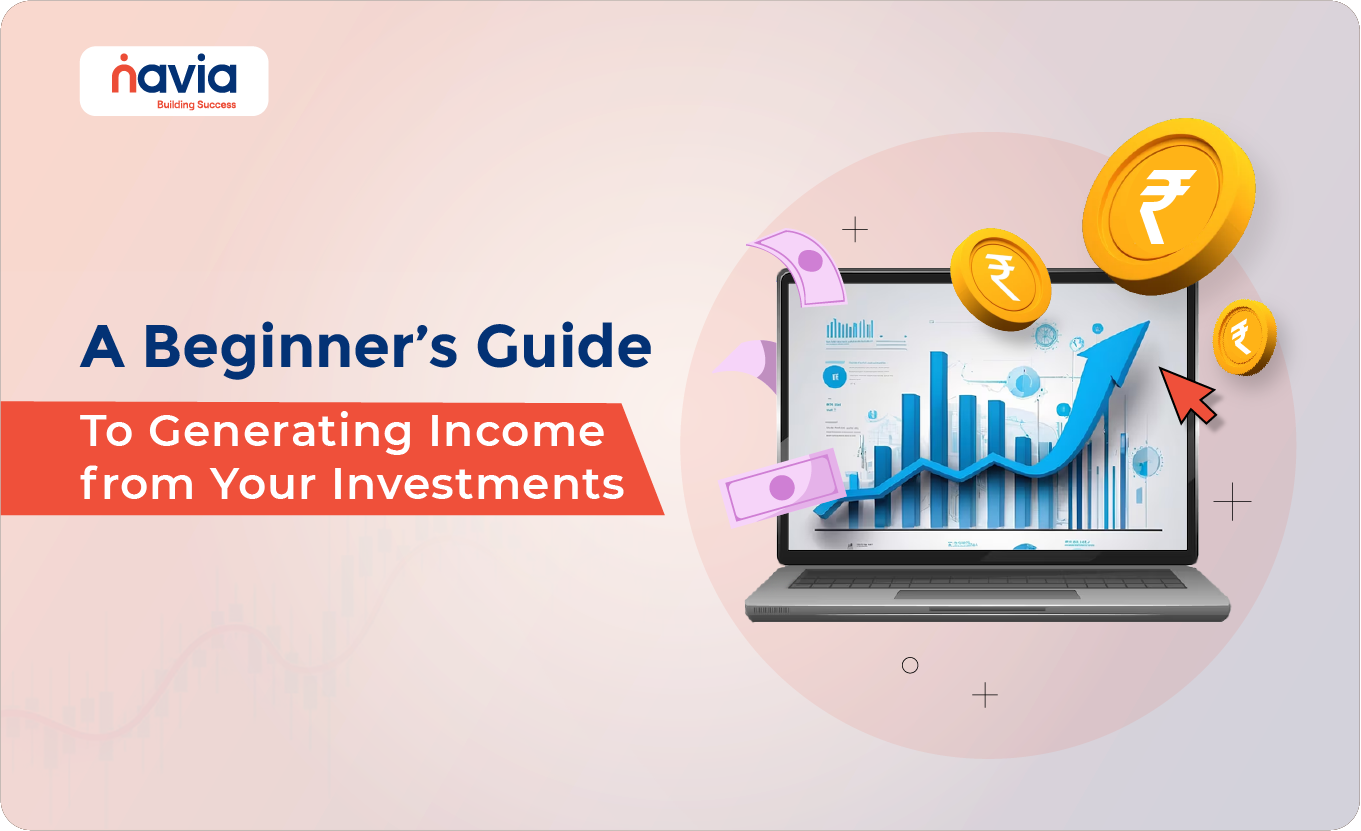Decoding Open Interest for Options Price Forecast: A Comprehensive Guide

Table of Contents
In the dynamic world of options trading, understanding the factors that influence price movements is crucial for making informed decisions. Among these factors, Open Interest (OI) is a key metric that can provide valuable insights into market sentiment, liquidity, and potential price trends. By analyzing open interest alongside other market indicators, traders can enhance their ability to forecast options prices and develop more effective trading strategies. In this blog, we will explore what open interest is, how it affects options prices, and provide easy-to-understand examples. We will also demonstrate how open interest is calculated and how it changes. Finally, we’ll discuss how the Navia Mobile App can help you leverage open interest data for better trading outcomes.
What is Open Interest?
Open interest refers to the total number of outstanding or open options contracts for a particular strike price and expiration date that have not yet been settled. It is a measure of the total number of contracts that have been created, but have not yet closed out, exercised, or expired. Unlike trading volume, which counts the number of contracts traded in each period, open interest provides a snapshot of market activity by showing how many contracts remain open at any point in time.
Why is Open Interest Important?
Open interest is important for several reasons:
● Liquidity: High open interest indicates a large number of open contracts, suggesting greater liquidity. This can lead to tighter bid-ask spreads, making it easier for traders to enter and exit positions without significant price slippage.
● Market Sentiment: Changes in open interest can signal shifts in market sentiment. For example, an increase in open interest alongside rising prices may indicate bullish sentiment, while rising open interest with falling prices could suggest bearish sentiment.
● Price Forecasting: By analyzing open interest in conjunction with price movements and volume, traders can gain insights into potential future price trends. For instance, a rising open interest in a trending market often confirms the strength of the trend.
How Open Interest is Calculated
Open interest is calculated based on the number of open contracts in the market. It increases when new contracts are created and decreases when existing contracts are closed. Below, we outline the key scenarios that impact open interest
1) New Contract Creation (Increases OI): When a new buyer and a new seller create a new contract, open interest increases with the number of contracts traded.
2) Closing an Existing Position (Decreases OI): When an existing contract is closed (i.e., the buyer sells or the seller buys back the contract), open interest decreases with the number of contracts closed.
3) Transfer of Position (No Change in OI): If a buyer sells their position to another buyer, or a seller buys back their position from another seller, open interest remains unchanged, as the total number of open contracts stays the same.
Example: How Open Interest is Calculated
Let’s walk through a simple example to illustrate how open interest is calculated and how it changes with trading activity:
| Transaction | Buyer | Seller | Action | Result | Open Interest Change |
| 1. New Contract Creation | Trader A | Trader B | Trader A buys 10 contracts from Trader B | 10 new contracts created | +10 |
| 2. Another New Contract Creation | Trader C | Trader D | Trader C buys 15 contracts from Trader D | 15 new contracts created | +15 |
| 3. Closing a Position | Trader A | Trader C | Trader A sells 5 contracts to Trader C | 5 contracts closed (Trader A reduces position) | -5 |
| 4. Transfer of Position | Trader D | Trader E | Trader D sells 10 contracts to Trader E | Position transferred; no new contracts created | 0 |
| 5. Closing All Remaining Positions | Trader B | Trader C | Trader B buys back 10 contracts from Trader C | 10 contracts closed (both traders exit) | -10 |
Table: Open Interest Calculation and Changes
| Transaction | Number of Contracts | Open Interest Before | Open Interest After | Change in OI |
| 1. New Contract Creation | 10 | 0 | 10 | +10 |
| 2. Another New Contract Creation | 15 | 10 | 25 | +15 |
| 3. Closing a Position | 5 | 25 | 20 | -5 |
| 4. Transfer of Position | 10 | 20 | 20 | 0 |
| 5. Closing All Remaining Positions | 10 | 20 | 10 | -10 |
How to Interpret Open Interest in Options Trading
Interpreting open interest requires understanding how it interacts with price movements and trading volume. Here are some key scenarios:
Rising Price with Increasing Open Interest
🔍 Interpretation: This typically indicates a strong bullish sentiment. As prices rise and open interest increases, it suggests that new money is entering the market, reinforcing the upward trend.
🔷 Example: If a stock is trading at ₹1,000 and the open interest for call options with a strike price of ₹1,050 increases significantly as the stock price rises, it could signal that traders expect the stock price to continue rising.
Rising Price with Decreasing Open Interest
🔍 Interpretation: When prices rise but open interest decreases, it may indicate that the current trend is losing momentum. Traders might be closing their positions, leading to a potential reversal.
🔷 Example: If the stock price rises to ₹1,100 but the open interest for call options decreases, it could suggest that traders are taking profits and exiting their positions, signaling a possible price correction.
Falling Price with Increasing Open Interest
🔍 Interpretation: This often indicates strong bearish sentiment. As prices fall and open interest increases, it suggests that traders are opening new short positions or buying puts, expecting further declines.
🔷 Example: If a stock falls from ₹1,000 to ₹950 and open interest in put options with a strike price of ₹900 increases, it may indicate that traders expect the stock to continue declining.
Falling Price with Decreasing Open Interest
🔍Interpretation: When prices fall and open interest decreases, it could mean that traders are closing out their positions, potentially signaling the end of a bearish trend.
🔷Example: If the stock price drops to ₹900 and open interest in put options decreases, it might suggest that traders are closing their positions, indicating a possible bottoming out of the stock price.
Analyzing Open Interest with Volume
Open interest should be analyzed alongside trading volume to get a clearer picture of market sentiment and potential price movements. Here’s how to interpret open interest in conjunction with volume:
High Volume with Increasing Open Interest
🔍 Interpretation: High volume with rising open interest typically indicates that new positions are being created, supporting the current price trend.
🔷 Example: If a stock’s call options see a surge in volume and open interest as the stock price rises, it suggests strong bullish sentiment and a potential continuation of the trend.
High Volume with Decreasing Open Interest
🔍 Interpretation: High volume with decreasing open interest suggests that existing positions are being closed. This could indicate a potential reversal of the current trend.
🔷 Example: If put options see high volume but declining open interest as a stock price falls, it may indicate that traders are closing their positions, possibly signaling a reversal.
Low Volume with Increasing Open Interest
🔍 Interpretation: Low volume with increasing open interest may suggest that new positions are being initiated quietly, which could lead to a significant price move in the future.
🔷 Example: If open interest in call options increases despite low volume, it might indicate that traders are quietly building positions in anticipation of an upward move.
Low Volume with Decreasing Open Interest
🔍 Interpretation: Low volume with decreasing open interest usually indicates a lack of interest or conviction in the current trend, suggesting consolidation or a potential trend reversal.
🔷 Example: If both volume and open interest decline in put options, it could suggest that the downtrend is losing steam and that the stock may stabilize.
Example: Using Open Interest and Volume to Predict Price Movements
| Scenario | Stock Price | Option Type | Strike Price | Volume | Open Interest | Interpretation |
| High Volume, Increasing OI | ₹1,000 | Call | ₹1,050 | 20,000 | +10,000 | Strong bullish sentiment, likely continuation of upward trend |
| High Volume, Decreasing OI | ₹1,100 | Call | ₹1,050 | 15,000 | -5,000 | Bullish trend may be ending, possible price reversal |
| Low Volume, Increasing OI | ₹950 | Put | ₹900 | 5,000 | +15,000 | Potential buildup of bearish positions, may signal a significant future price move |
| Low Volume, Decreasing OI | ₹900 | Put | ₹900 | 3,000 | -8,000 | Downtrend losing momentum, potential stabilization |
Common Mistakes When Interpreting Open Interest
While open interest is a valuable tool for forecasting options prices, it is important to avoid common pitfalls:
➝ Ignoring Context: It should be analyzed within the broader context of market conditions, trading volume, and other technical indicators. Relying solely on open interest can lead to incorrect conclusions.
➝ Overemphasizing Short-Term Changes: Short-term fluctuations in open interest may not always indicate a change in market sentiment. It is essential to consider longer-term trends and patterns.
➝ Misinterpreting Declining Open Interest: A decrease in open interest does not always signal the end of a trend. It could indicate profit-taking or position adjustments by traders.
How to Use Navia Mobile App for Better Option Trading
The Navia Mobile App is a powerful tool that can help you make more informed options trading decisions by leveraging open interest data:
➝ Real-Time Open Interest Data: The Navia Mobile App provides real-time data on open interest for various options contracts. This allows you to monitor changes in market sentiment and adjust your trading strategies accordingly.
➝ Volume and Open Interest Analysis: The app allows you to analyze open interest alongside trading volume, giving you a clearer picture of market dynamics and potential price movements.
➝ Option Strategy Builder: Use Navia’s strategy builder to create and test various options strategies based on open interest trends. This feature helps you optimize your trades and improve your chances of success.
➝ Portfolio Tracking: Monitor your options portfolio in real-time, track changes in open interest, and adjust your positions as needed to stay ahead of market trends.

Conclusion
Decoding open interest is a crucial skill for any options trader. By understanding how it is calculated and interpreting it alongside price movements and volume, you can gain valuable insights into market sentiment and potential price trends. This knowledge can help you forecast options prices more accurately and develop more effective trading strategies.
The Navia Mobile App provides you with the tools and real-time data necessary to make the most of open interest analysis. Whether you’re a beginner or an experienced trader, using the Navia Mobile App can help you navigate the complexities of options trading and achieve your financial goals. Happy trading!
DISCLAIMER: Investments in the securities market are subject to market risks, read all the related documents carefully before investing. The securities quoted are exemplary and are not recommendatory. Brokerage will not exceed the SEBI prescribed limit.
We’d Love to Hear from you-





